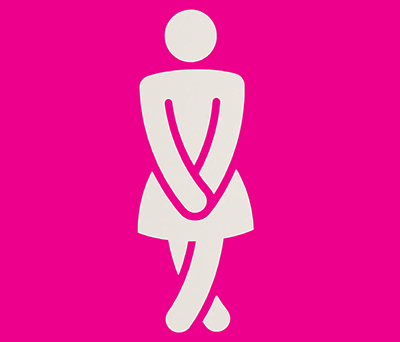
For such a long time, women with incontinence suffered in silence. This was a secret many didn’t want to talk about –even with their closest friends. Incontinence can be distressing and can have a dramatic effect on a woman’s quality of life. There are now many management options for treatment of stress and urge incontinence.
Washington University physician Chiara Ghetti, MD, MS, specialist in female pelvic medicine and reconstructive surgery says, “Pelvic floor disorder is any kind of impairment in the pelvic floor area – which is part of the core of the body. The pelvic floor includes the muscles that surround the rectal area and genital area. The pelvic floor helps to support the internal organs and helps with the function of urination and defecation.
Because treatment choices for incontinence can include pelvic floor physical therapy and behavioral modification, we do refer some patients for physical therapy.”
Tracy Spitznagle, PT, DPT, Washington University physical therapist who specializes in women’s health – incontinence and pelvic pain explains, “Pelvic floor physical therapy is a bit like having a personal trainer for your pelvic floor muscles. Sometimes those muscles are too weak or they can be injured or overworked.
Because everyone is different, I begin with a comprehensive patient evaluation. This includes a movement assessment of the trunk and hips followed by a specific pelvic floor muscle examination.
Once I figure out what the problems are, I am able to design an individualized program that addresses the symptoms. Treatment can include: specific pelvic and abdominal muscle exercises for management of length, coordination and strength and patient education regarding functional activities that produce the symptoms. For example if you leak with a cough or sneeze, we would teach you to “squeeze before you sneeze”.
Kegel exercises are the gold standard used to strengthen the pelvic floor muscles, however stronger is not always better. It is very important to understand not only how to contract the pelvic floor muscles but also, how to relax the pelvic muscles, thus a thorough examination of the performance of the pelvic muscles is ideal for treatment success. Sometimes over activity of the pelvic floor muscle is more of an issue than weakness.
The length of physical therapy varies — it depends on how severe the symptoms are, how long the patient has had them and how dedicated the patient is to doing the home program.
If physical therapy does not work, there are medications and surgical options available. It is important for women to be informed about what causes incontinence and treatment options. It is NOT something they “just have to live with.”
If you are suffering from urinary incontinence and would like to see Dr. Ghetti, Dr. Spitznagle, or one of our female pelvic medicine specialists, please call for an appointment.
Washington University Gynecologic Treatment Center: 314-747-1402
Center for Advanced Medicine
4921 Parkview Place, Suite 13CSt. Louis, MO 63110
Center for Women’s Wellness and Fetal Health: 314-996-6000
Missouri Baptist Medical Center
3023 North Ballas Road, Suite 450
St. Louis, MO 63131
Washington University Physical Therapy: 314-286-1940
4444 Forest Park Avenue Building, Suite 1101
St. Louis, MO 63110